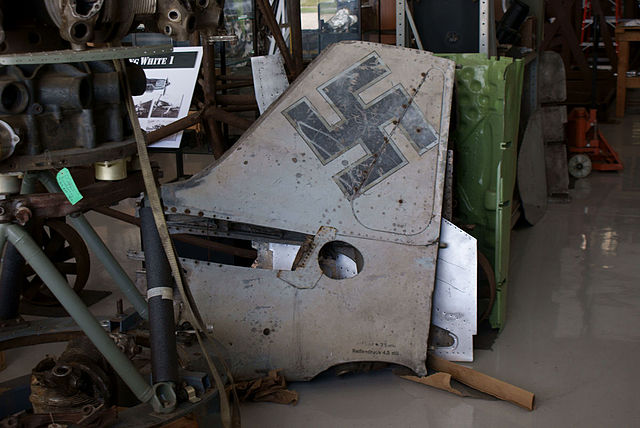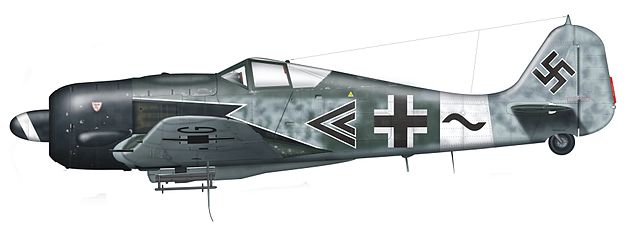The Focke-Wulf Fw 190, nicknamed Würger (Shrike) is a German single-seat, single-engine fighter aircraft designed by Kurt Tank at Focke-Wulf in the late 1930s and widely used during World War II. Along with its well-known counterpart, the Messerschmitt Bf 109, the Fw 190 became the backbone of the Jagdwaffe of the Luftwaffe. The twin-row BMW 801 radial engine that powered most operational versions enabled the Fw 190 to lift larger loads than the Bf 109, allowing its use as a day fighter, fighter-bomber, ground-attack aircraft and to a lesser degree, night fighter.
Focke-Wulf Fw 190
An Fw 190F's tailfin, showing the triangular hinged panel for access to the tailwheel retraction mechanism inside of it
Fw 190 A-8/R8 of IV.(Sturm)/JG 3, flown by Hptm. Wilhelm Moritz
Fw 190 V1 in its original form with the streamlined engine cowling and ducted spinner. The pointed tip of the internal spinner can also be seen. Pilot is probably Hans Sander.
Kurt Waldemar Tank was a German aeronautical engineer and test pilot who led the design department at Focke-Wulf from 1931 to 1945. He was responsible for the creation of several important Luftwaffe aircraft of World War II, including the Fw 190 fighter aircraft, the Ta 152 fighter-interceptor and the Fw 200 Condor airliner. After the war, Tank spent two decades designing aircraft abroad, working first in Argentina and then in India, before returning to West Germany in the late 1960s to work as a consultant for Messerschmitt-Bölkow-Blohm (MBB).
Prof. Dr. Dipl.-Ing. Kurt Tank, March 1941
Major Günther Specht (left) and Kurt Tank (right)
Tank (left, barely visible) exhibiting the IAe 33 to President Perón (center, in white uniform) c. 1951







